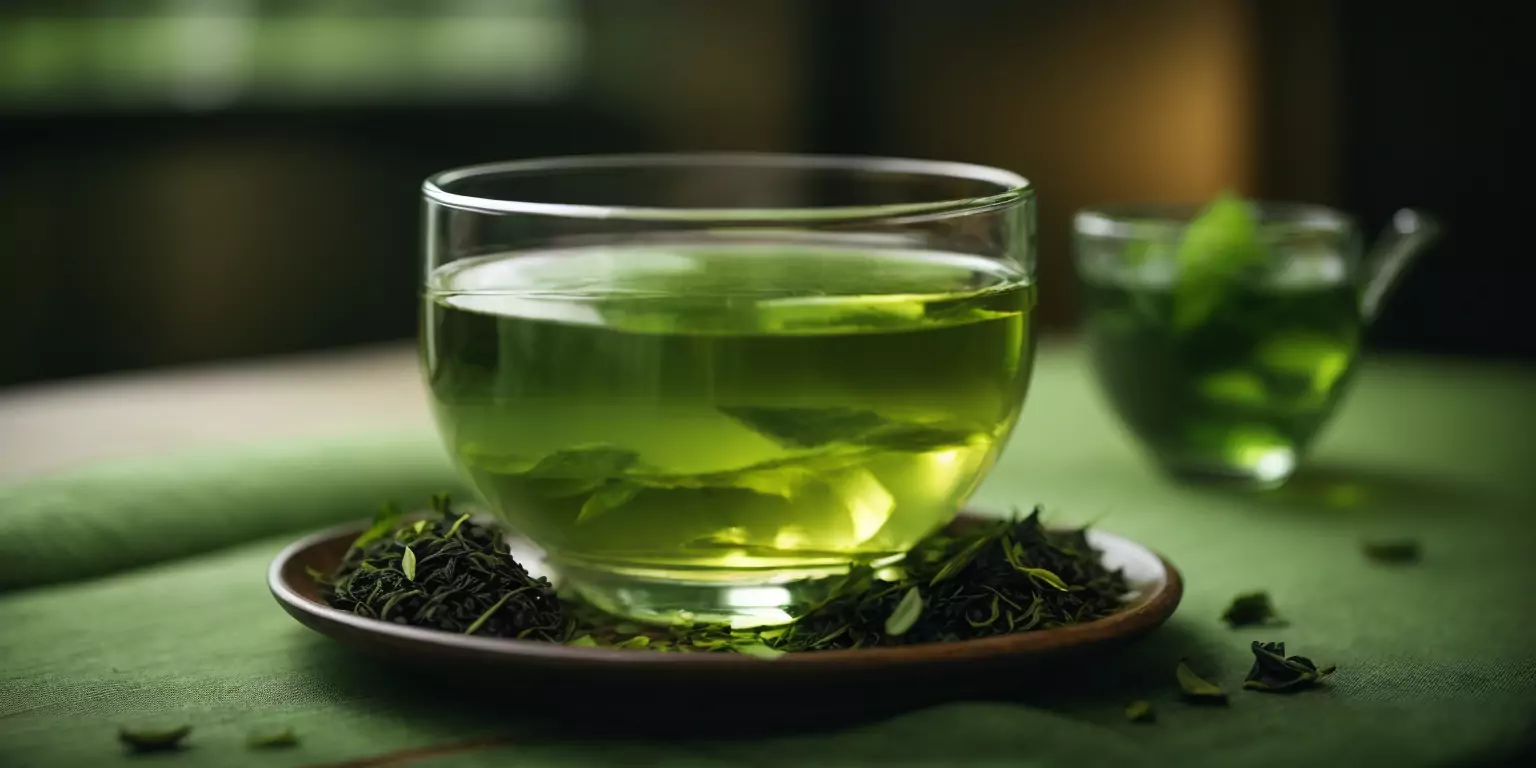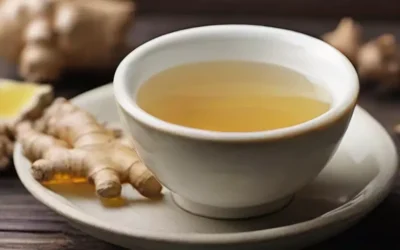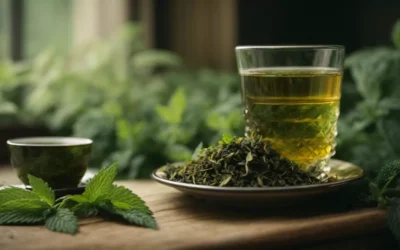Green tea, along with quality teas such as black teas, is a beloved beverage enjoyed worldwide. It holds a rich history and is renowned for its numerous health benefits. Whether you prefer green tea, black tea, or even coffee, finding the perfect drink to suit your taste is essential. Made from the leaves of the Camellia sinensis plant, black teas are quality teas packed with potent antioxidants known as polyphenols, similar to green tea catechins. Black teas offer a rich flavor-alternative to coffee. Green tea extract, tea polyphenols, and green tea catechins have been extensively studied in various studies for their potential to support overall well-being and promote optimal health.
From boosting metabolism to improving brain function, drinking green tea has garnered attention for its possible health benefits. Green tea is rich in polyphenols, including catechins, which contribute to its positive effects on the body. It is often compared to other popular teas like oolong and black teas, but stands out due to its unique production process that helps retain its natural properties, including polyphenols. This tea is a refreshing drink that can be enjoyed hot or cold. Many people also choose to consume it in extract form. In this review, we will explore the benefits and taste of this tea. With an average of 30-50 mg of caffeine per cup, drinking tea provides a gentle energy boost without the jitters commonly associated with coffee. This is due to the presence of green tea catechins and tea extracts, such as green tea extract.
- Unveiling the Origins of Green Tea
- Cultural Significance of Green Tea Traditions
- Exploring Types and Varieties of Green Tea
- Delving into the Nutritional Profile of Green Tea
- Examining the Top Health Benefits of Green Tea
- Analyzing Green Tea’s Role in Weight Management
- Investigating the Potential Risks of Overconsumption
- Brewing Tips for the Perfect Cup of Green Tea
- Conclusion: The Essence of Green Tea in Healthy Living
- Frequently Asked Questions
Unveiling the Origins of Green Tea
Ancient China: The Birthplace of Green Tea
The origins of green tea can be traced back to ancient China, where researchers first discovered and cultivated the drink. Green tea is rich in polyphenols, making it a popular choice among health-conscious individuals. People in China have been drinking tea for thousands of years, making it a long-standing tradition. This ancient practice is not only enjoyed for its taste, but also for its rich source of polyphenols. The production of tea in China has a deep-rooted history that continues to thrive today. Legend has it that Emperor Shen Nong, known as the “Divine Farmer,” discovered tea when a leaf containing polyphenols from a nearby tree fell into his boiling water. Researchers have conducted studies on the benefits of polyphenols for people. Intrigued by the refreshing aroma and taste of oolong tea, made from tea leaves, he decided to try it for himself, along with the invigorating green tea extract.
Green Tea in Japanese Culture
Green tea, known for its high content of polyphenols, made its way to Japan during the Tang Dynasty in China (618-907 AD). Researchers have found that the consumption of green tea by people may help reduce the risk of certain diseases. Buddhist monks introduced tea leaves to Japan, where green tea consumption quickly became an integral part of their culture. Japanese Zen monks appreciated green tea for its calming and meditative properties, as numerous studies have shown that it can reduce the risk of stress and anxiety in people. They began studying and conducting studies on their own varieties and developed unique tea ceremonies centered around the preparation and serving of matcha, a powdered form of green tea. People were interested in these studies as they wanted to understand the risk associated with consuming matcha tea.
Global Cultivation of Green Tea
Today, green tea is cultivated in various countries around the world due to its popularity and health benefits. While China, Japan, India, Sri Lanka, Kenya, and Vietnam remain major producers of green tea, studies have shown that the cultivation of this popular beverage carries certain risks. Each region produces unique varieties of black tea with distinct flavors influenced by factors like climate, soil conditions, and processing techniques. Numerous studies have shown that black tea consumption is associated with a reduced risk of certain health conditions.
In China, different provinces are known for specific types of green teas. For example, Longjing (Dragon Well) tea from Zhejiang province is famous for its flat leaves and delicate flavor profile. Meanwhile, in Japan, regions like Uji and Shizuoka are renowned for producing high-quality matcha powder used in traditional tea ceremonies.
Green tea leaves are carefully harvested by hand or through mechanical means depending on the scale of production. After harvesting, they undergo minimal oxidation through processes like steaming or pan-firing to preserve their natural color and flavor. The leaves from the study on black tea and green tea consumption are then dried and sometimes rolled or shaped into different forms. People were involved in the study.
Green tea extracts have gained popularity for their potential health benefits. These extracts, derived from the leaves of green tea plants, contain high concentrations of beneficial compounds like catechins and antioxidants. They are used in various dietary supplements, skincare products, and even some beverages.
Cultural Significance of Green Tea Traditions
Green tea holds immense cultural significance in traditional Chinese and Japanese ceremonies. It is deeply ingrained in the customs and rituals of these cultures, symbolizing hospitality, respect, and tranquility.
Traditional Chinese Ceremonies
In China, green tea is an integral part of various ceremonial practices. One such ceremony is the Gongfu tea ceremony, which originated in the Chaozhou region. This ritual emphasizes the art of brewing and serving tea with precision and grace. Participants meticulously prepare the tea leaves, control water temperature, and carefully pour the brewed tea into small cups to ensure a perfect infusion.
Another notable tradition is the Cha Dao or “the way of tea.” This practice focuses on mindfulness and meditation while preparing and consuming green tea. It encourages individuals to be fully present in each moment, appreciating the aroma, taste, and texture of the tea.
Japanese Tea Ceremonies
In Japan, green tea ceremonies are known as Chanoyu or Sado. These ceremonies are considered a form of art that combines aesthetics, spirituality, and hospitality. The most well-known type of Japanese green tea used in these ceremonies is matcha – a finely ground powdered green tea.
The preparation process involves meticulous attention to detail. The host cleanses all utensils with utmost care before beginning the ceremony. The powdered matcha is then whisked vigorously with hot water using a bamboo whisk until it forms a frothy consistency. The host serves each guest a bowl of matcha with both hands as a gesture of respect.
Symbolism
Green tea holds symbolic meanings within these traditions. It represents more than just a beverage; it embodies values such as harmony, purity, humility, and gratitude. Serving green tea to guests signifies warm hospitality and respect for their presence.
Moreover, participating in these ceremonies fosters tranquility and mindfulness among individuals. By engaging in deliberate actions like pouring hot water, whisking tea, and savoring each sip, participants cultivate a sense of calmness and inner peace.
Art and Meditation
Green tea ceremonies are not merely about the act of drinking tea; they are considered an art form. Every movement, gesture, and utensil used in these ceremonies is carefully choreographed to create a harmonious experience for both the host and guests.
These ceremonies also serve as a form of meditation. The focus required during the preparation and consumption of green tea allows individuals to find solace in the present moment. It provides an opportunity to escape from the fast-paced world and embrace stillness.
Exploring Types and Varieties of Green Tea
Green tea comes in a wide range of types and varieties, each offering its own unique flavor profile and brewing method. Let’s delve into the world of green tea to discover the different types and the distinct characteristics they possess.
Sencha
Sencha is one of the most popular types of green tea. It is grown in Japan and is known for its vibrant green color and refreshing taste. The leaves are harvested from the top part of the tea plant, resulting in a delicate yet slightly grassy flavor. To brew Sencha, simply steep the leaves in hot water for a few minutes until they unfurl, releasing their aromatic essence.
Matcha
Matcha is a finely ground powdered green tea that originated in Japan. Unlike other types of green tea where only the infused liquid is consumed, with Matcha, you actually consume the entire leaf by whisking it into a frothy drink. This results in a rich and creamy texture with a slightly bitter taste. Matcha can also be used as an ingredient in various culinary creations like desserts or smoothies.
Gyokuro
Gyokuro is considered one of Japan’s highest-quality teas due to its meticulous cultivation process. The leaves are shaded from direct sunlight for several weeks before harvest, which enhances their sweetness and reduces bitterness. Gyokuro has an exquisite aroma and a mild umami flavor that sets it apart from other green teas.
Each type of green tea offers something unique. Sencha has a refreshing grassy flavor, while Matcha provides a rich and creamy experience with hints of bitterness. Gyokuro delights with its delicate sweetness and subtle umami notes.
It’s worth noting that different regions produce green teas with distinct characteristics based on factors such as climate, soil conditions, and processing techniques. For example, Chinese green teas tend to have nuttier flavors compared to their Japanese counterparts. Meanwhile, Korean green teas often possess a more vegetal taste.
Delving into the Nutritional Profile of Green Tea
Low in Calories, Rich in Antioxidants
Green tea is not only a refreshing beverage but also a powerhouse of nutritional benefits. It contains a minimal amount of calories, making it an excellent choice for those watching their weight or looking to maintain a balanced diet. However, what sets green tea apart are the antioxidants known as catechins. These powerful compounds help protect our bodies from damage caused by harmful free radicals, which can increase the risk of cancer.
Vitamins, Minerals, and Amino Acids
In addition to catechins, green tea contains various vitamins and minerals that contribute to overall health. It is a good source of vitamin C, which supports the immune system and helps with collagen production for healthy skin. Green tea also provides small amounts of minerals such as potassium and magnesium, which are essential for maintaining proper bodily functions.
Furthermore, green tea contains amino acids that have been associated with numerous health benefits. One notable amino acid found in green tea is L-theanine, which promotes relaxation and may help reduce stress levels without causing drowsiness.
Contributing to a Balanced Diet
Regular consumption of green tea can be an excellent addition to a well-rounded diet. The bioactive compounds present in green tea have been studied extensively for their potential health benefits. For example, research suggests that certain polyphenols found in green tea, such as epigallocatechin gallate (EGCG), may help regulate blood sugar levels and improve insulin sensitivity.
Moreover, studies have shown that regular consumption of green tea may contribute to improved heart health by reducing total cholesterol levels and lowering blood pressure. These effects can play a crucial role in minimizing the risk of cardiovascular diseases.
An Array of Health Benefits
The nutritional profile of green tea extends beyond its antioxidant content. Some studies suggest that regular consumption of this beverage may aid in weight loss by boosting metabolism and increasing fat oxidation. The caffeine content in green tea can provide a mild energy boost and improve focus.
Green tea has also been associated with potential anticancer properties. The polyphenols present in green tea have been shown to inhibit the growth of cancer cells and reduce the risk of certain types of cancer, such as breast, prostate, and colorectal cancers.
Examining the Top Health Benefits of Green Tea
Green tea has gained popularity not only for its refreshing taste but also for its numerous health benefits. Let’s explore some of the potential health benefits associated with this ancient beverage.
Improved Brain Function and Reduced Risk of Heart Disease
Studies suggest that drinking green tea may have beneficial effects on brain function. The presence of caffeine and an amino acid called L-theanine in green tea can improve brain function, including enhanced mood, alertness, and memory. Green tea contains antioxidants that may help protect brain cells from damage caused by free radicals.
Furthermore, consuming green tea has been linked to a lower risk of heart disease. The antioxidants present in green tea can help reduce inflammation in the body, which is a known factor contributing to heart disease. Regular consumption of green tea may also help lower bad cholesterol levels and improve blood lipid profiles, reducing the risk of developing cardiovascular conditions.
Potential Anticancer Properties
Green tea has been studied extensively for its possible role in cancer prevention. Some research suggests that the polyphenols found in green tea may have anticancer properties by inhibiting the growth of cancer cells and reducing tumor formation.
Several types of cancer have been investigated in relation to green tea consumption. For example, studies indicate that drinking green tea regularly may reduce the risk of prostate cancer in men. Similarly, it has shown potential protective effects against stomach, lung, bladder, esophageal, and colorectal cancers.
It is important to note that while these studies show promising results regarding possible health benefits related to cancer prevention, more research is needed to fully understand the mechanisms involved and establish definitive conclusions.
Other Health Benefits
In addition to improved brain function and potential anticancer properties, green tea offers several other health benefits. Research suggests that regular consumption of green tea may help regulate blood sugar levels and reduce the risk of developing type 2 diabetes.
Moreover, some studies indicate that green tea can help lower blood pressure, which is a significant risk factor for heart disease. By promoting healthy blood flow and relaxing blood vessels, green tea may contribute to maintaining optimal blood pressure levels.
Furthermore, the consumption of green tea has been associated with improved oral health. The natural compounds found in green tea have antibacterial properties that can help prevent dental cavities and reduce bad breath.
Analyzing Green Tea’s Role in Weight Management
Green tea has long been praised for its potential to aid in weight loss. It is believed that the compounds found in green tea can have a positive impact on metabolism and fat oxidation, making it an attractive option for those looking to manage their weight.
Boosting Metabolism and Increasing Fat Oxidation
One of the key ways that green tea may contribute to weight management is through its ability to boost metabolism. Research suggests that the catechins present in green tea can help increase thermogenesis, which is the process by which the body burns calories to produce heat. By increasing thermogenesis, green tea may help individuals burn more calories throughout the day, even at rest.
Green tea has been found to enhance fat oxidation. This means that it can increase the body’s ability to break down stored fat and use it as a source of energy. The combination of increased metabolism and enhanced fat oxidation has led researchers to believe that incorporating green tea into a healthy diet and exercise routine may support weight management efforts.
Supporting Weight Loss Efforts
Several studies have examined the effects of green tea consumption on weight loss. While results vary, some research suggests that regularly consuming green tea or taking green tea extract supplements may lead to modest weight loss over time. However, it is important to note that these effects are typically seen in conjunction with other lifestyle changes such as calorie reduction and increased physical activity.
It should also be noted that while green tea can provide some benefits is not a magic solution on its own. It should be used as part of an overall healthy lifestyle approach that includes a balanced diet and regular exercise.
Comparing Green Tea with Ephedrine
In the past, ephedrine was commonly used as a weight loss supplement due to its stimulant properties. However, due to safety concerns and potential side effects, ephedrine has been banned in many countries. As a result, green tea has gained popularity as a safer alternative for those looking to support their weight management goals.
Green tea provides similar benefits to ephedrine, such as increased metabolism and fat burning, but without the associated risks. It is important to note that while green tea is generally considered safe for most people when consumed in moderation, it may still have some side effects or interactions with certain medications. It is always best to consult with a healthcare professional before starting any new supplement or weight loss regimen.
Incorporating green tea into a healthy diet and exercise routine may offer some support for weight management efforts. However, it is important to remember that sustainable weight loss requires a comprehensive approach that includes various lifestyle factors. Green tea can be a beneficial addition to this approach, but it should not be relied upon as the sole solution for achieving and maintaining a healthy weight.
Investigating the Potential Risks of Overconsumption
Excessive Consumption and Caffeine-related Side Effects
While green tea is generally safe for consumption, it’s important to be aware of the potential risks associated with overconsumption. One of the primary concerns is the presence of caffeine in green tea. Caffeine is a natural stimulant that can have both positive and negative effects on the body.
Some individuals may be more sensitive to caffeine than others, and consuming excessive amounts of green tea can lead to caffeine-related side effects. These side effects may include restlessness, increased heart rate, difficulty sleeping, anxiety, and digestive issues.
Moderation for Sensitive Individuals
If you are particularly sensitive to caffeine or have pre-existing health conditions that may be exacerbated by its consumption, it is advisable to moderate your intake of green tea. This means being mindful of how much you consume on a daily basis and considering alternative options if necessary.
It’s important to note that everyone’s tolerance to caffeine varies. Some individuals may experience adverse effects even with small amounts, while others may be able to tolerate larger quantities without any issues. It’s crucial to listen to your body and adjust your consumption accordingly.
Seeking Professional Advice
If you have any concerns about consuming green tea or are unsure about how much is appropriate for you, it’s always best to consult a healthcare professional. They can provide personalized guidance based on your specific circumstances and medical history.
Healthcare professionals can also help determine if there are any potential interactions between green tea and medications you may be taking. Certain medications can interact with the compounds found in green tea, leading to unwanted side effects or reduced effectiveness.
By seeking professional advice, you can make informed decisions about incorporating green tea into your diet while minimizing any potential risks.
Brewing Tips for the Perfect Cup of Green Tea
Water Temperature: 175°F (80°C)
To avoid bitterness in your green tea, it’s crucial to use water that is around 175°F (80°C). This temperature strikes the perfect balance to extract the flavors without overpowering the delicate taste of green tea. Boiling water can scorch the leaves and result in a bitter brew, so it’s essential to keep an eye on the temperature.
Steeping Time: 2-3 Minutes
For a delicate and flavorful cup of green tea, steeping time plays a vital role. It is recommended to steep your green tea for approximately 2-3 minutes. This duration allows for the extraction of flavors while maintaining a smooth and refreshing taste profile. Oversteeping can lead to bitterness, so be sure not to exceed this timeframe.
Experimentation is Key
While there are general guidelines for brewing green tea, everyone has their own preferences. That’s why it’s important to experiment with different brewing times and water temperatures until you find your perfect cup of green tea. Some individuals may prefer a shorter steeping time or slightly higher water temperature for a stronger flavor, while others may opt for milder brews with longer infusion periods.
By adjusting these variables according to your personal taste preferences, you can create a unique experience tailored just for you. Keep track of your experiments by noting down the brewing parameters that yield your favorite cups of green tea.
Discover Your Preferred Taste
The beauty of brewing green tea lies in its versatility; each variation offers distinct flavors and characteristics. For example, Japanese sencha tends to have grassy and vegetal notes, while Chinese Dragon Well (Longjing) offers chestnut-like flavors. By exploring different types of green teas from various regions, you can discover which ones align with your taste preferences.
Moreover, don’t forget about flavored variations of green tea. Some popular options include jasmine-infused green tea, which adds a floral aroma, or mint green tea, which provides a refreshing twist. These flavored teas can be a delightful way to elevate your green tea experience.
Embrace the Art of Green Tea Brewing
Brewing the perfect cup of green tea is not just about following strict rules; it’s an art form that allows you to express your individuality and creativity. As you become more familiar with different brewing techniques and flavor profiles, you’ll develop a deeper appreciation for the nuances of green tea.
So, grab your favorite teapot or infuser and embark on this journey of discovering the perfect cup of green tea that suits your taste buds. With practice and experimentation, you’ll master the art of brewing this beloved beverage.
Conclusion: The Essence of Green Tea in Healthy Living
In conclusion, the exploration of green tea has revealed its rich history, cultural significance, and numerous health benefits. Originating in ancient China, green tea has become a symbol of tranquility and wellness across various cultures. Its nutritional profile is impressive, boasting antioxidants, vitamins, and minerals that contribute to overall well-being. From boosting metabolism and aiding weight management to reducing the risk of chronic diseases, green tea offers a natural and effective way to enhance one’s health.
To fully embrace the essence of green tea in healthy living, individuals can incorporate it into their daily routines. By following brewing tips and consuming it regularly, they can experience the full spectrum of its benefits. Whether enjoyed hot or cold, green tea provides a refreshing and soothing beverage option that promotes vitality and balance. So why not take a moment to savor a cup of green tea today and embark on a journey towards improved health?
Frequently Asked Questions
What are the origins of green tea?
Green tea originated in China during the Tang dynasty (618-907 AD) and later spread to Japan. It has been an integral part of Chinese and Japanese cultures for centuries, with a rich history steeped in tradition and ceremony.
How many types and varieties of green tea are there?
There are numerous types and varieties of green tea, each with its own unique flavor profile. Some popular ones include Sencha, Matcha, Gyokuro, Jasmine, and Gunpowder. Each type undergoes different processing methods, resulting in distinct tastes and aromas.
What is the nutritional profile of green tea?
Green tea is a rich source of antioxidants called catechins, particularly epigallocatechin gallate (EGCG). It also contains vitamins C, E, and K, minerals like potassium and manganese, as well as amino acids. These components contribute to its potential health benefits.
What are the top health benefits associated with green tea?
Green tea has been linked to various health benefits due to its antioxidant properties. It may help improve brain function, boost metabolism, lower the risk of heart disease, reduce inflammation, promote weight loss, enhance liver health, and even aid in cancer prevention.
How does green tea contribute to weight management?
Green tea can aid in weight management by increasing metabolism and fat oxidation. The catechins present in green tea have been shown to enhance thermogenesis (the body’s calorie-burning process) and may assist in reducing body weight when combined with a healthy diet and regular exercise.











